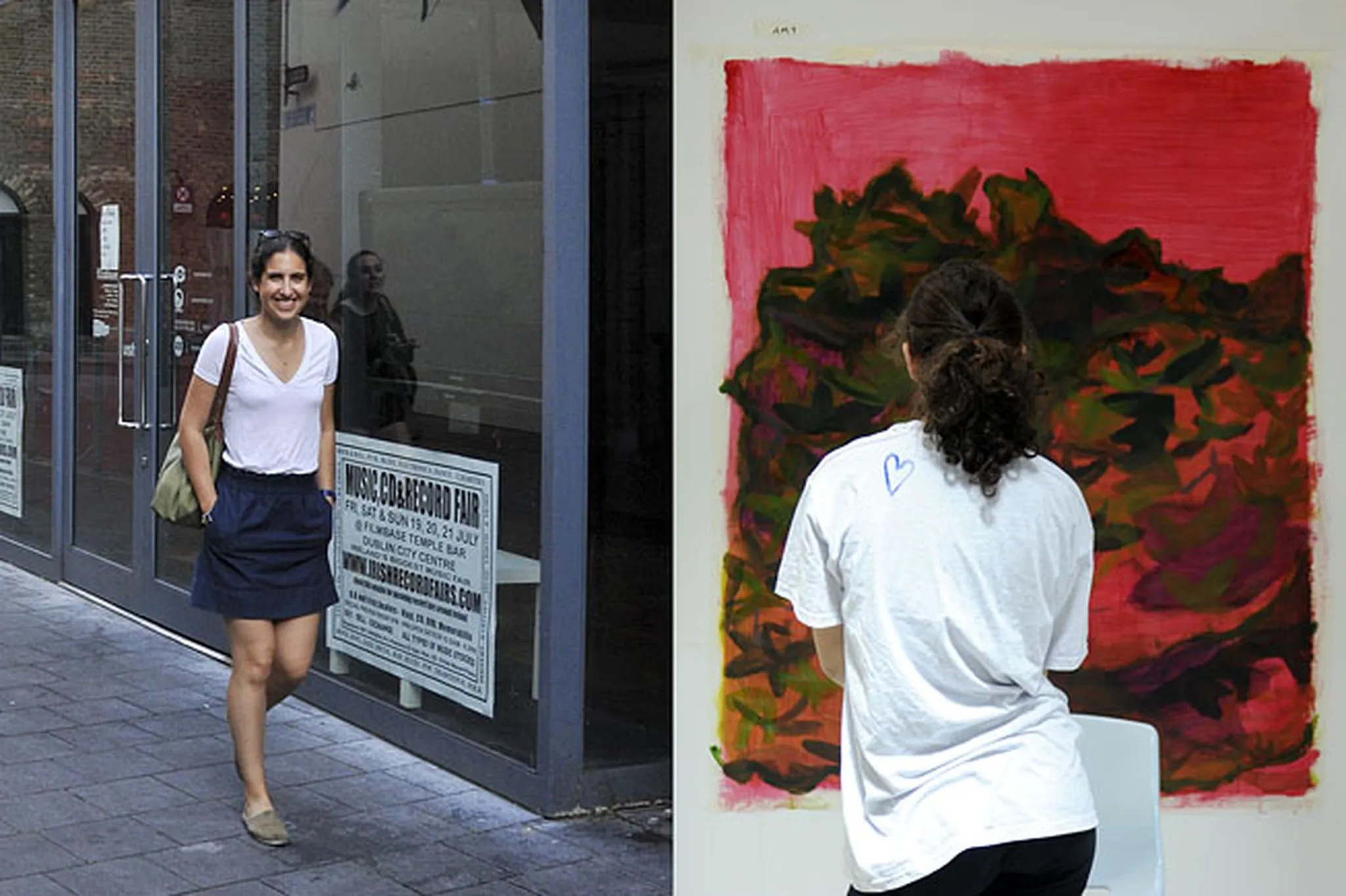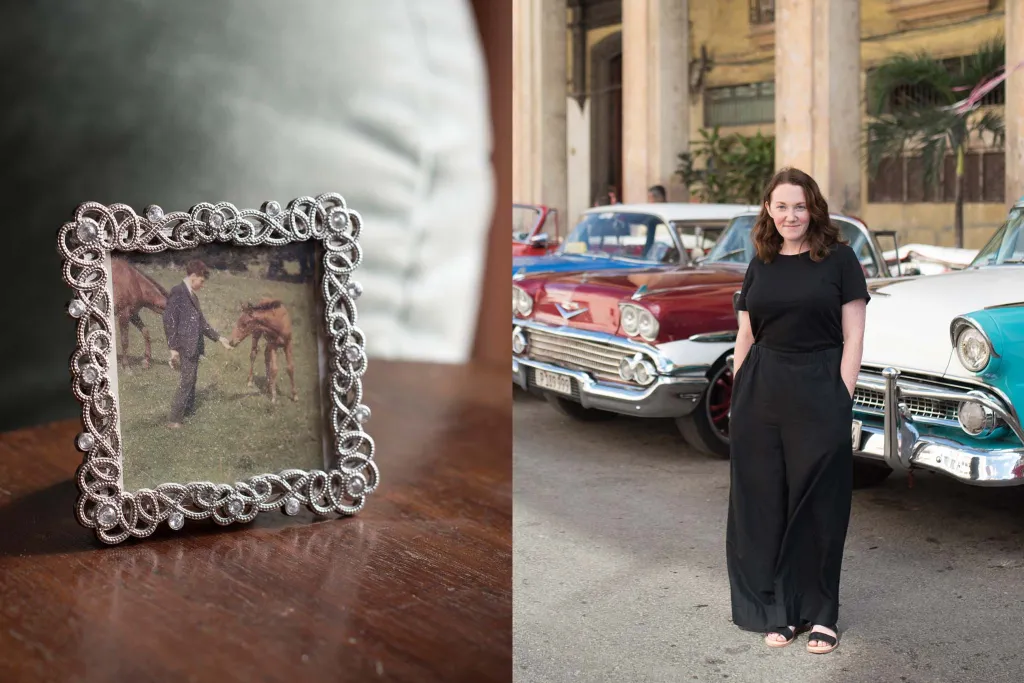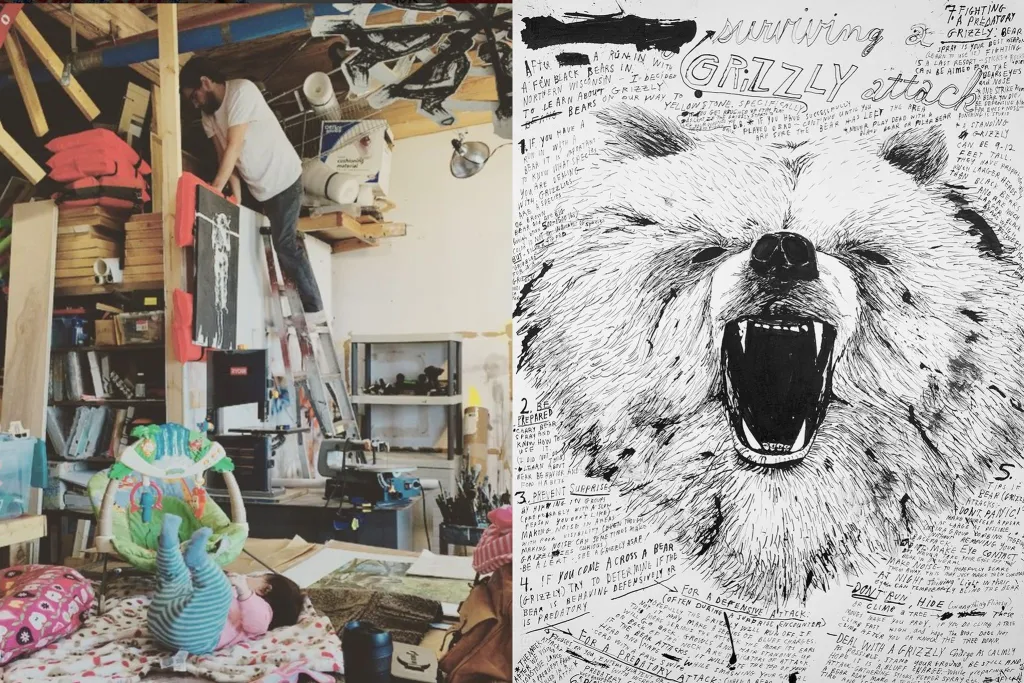Amy Weiss-Meyer

Amy was a student during Art on the Farm – Summer Art Programs, 2009. As a Sophomore she was part of our second ever summer session. Now a student at Harvard University, Amy has stayed in touch with us over the years. Amy has represented Cow House Studios at several summer fairs and even came for a visit during the summer of 2013. She is currently editor for The Harvard Crimson blog Flyby.
CHS:What is your most vivid memory from your summer here in Ireland? How did your time at Cow House inform you as an individual?
AWM:I have so many vivid memories of Cow House! One of my favorite memories is working on my tree painting. The assignment was to spend lots of time getting to know a tree on the farm, sketching it and photographing it from all angles, and then ultimately to make a large acrylic painting of it. After diligently observing my tree each day for most of the first week, I came to be pretty fond of it, and I had lots of fun painting it. It was by far the largest painting I had ever worked on (and still is the largest I’ve done), and I was very happy with the final product. It actually turned out that my “tree” wasn’t a tree at all but a rhododendron bush, which I think Rosie politely and casually mentioned in our critique. Despite my total city-kid ignorance of the difference between a tree and a bush, I learned a lot from this process about working independently and creatively. My high school experience did not involve a lot of choice, and I was terrified at the beginning of my three weeks at Cow House that i wouldn’t be able to fill my time there with meaningful or “good” work. The technical execution of the kind of art I want to make doesn’t always come easily to me, but I quickly found that I was inspired and motivated by my teachers, my peers, and my surroundings to push myself (and that Frank was willing to push me when I wasn’t). I gained a lot of faith in the validity of my own ideas and got to practice taking the initiative to act on those ideas; it sounds corny, but knowing I can do that has stuck with me and reminded me that there is value in taking on all kinds of challenges. Specifically, I think it’s been applicable to my academic experience. I’m now a junior in college majoring in History and Literature, which is a very self-directed program.
CHS:You visited us during Art on the Farm this past summer. What seemed the same, what had changed?
AWM:Visiting Art on the Farm was wonderful. Not only was I thrilled to be back in such a beautiful, fun place (and to crash Rosie’s drawing lessons), but I was also so glad to see and feel that everything that was so amazing about the program when I was there as a student was going strong four years later. Obviously the structure of the program has somewhat changed, with students now focusing on photography or painting, whereas back in my day (what can I say, visiting made me feel ancient), we all did everything all the time, which was somewhat overwhelming. It seems like this added structure helps a lot of work get done from the get-go, but it was nice to see that there’s still ample time for independence and a basic trust in students’ capacity to self-direct that guides how days and lessons are organized and run. When I was at Cow House, it was only the second session of Art on the Farm ever, so Rosie and Frank were making decisions based on their instincts and their experience having done all this exactly once. Their instincts were (and are!) spot on, but it was clear to me this past summer that they were able to make plans based on lots of experience doing Art on the Farm with dozens of students over tons of sessions, which made everything feel even more natural and seemed to be a bit less stressful for them, now that they have it down pat!
It goes without saying that the caliber of student work was a high as ever (if not higher), and seeing them all begin to form friendships with each other and relationships with the adults was quite literally heart-warming. There is something very intimate and binding about a small group of people choosing to be in one place for three weeks for the express purpose of making art together. I really do think relationships form faster and stronger in these kinds of circumstances, where everyone is a little bit out of their comfort zone and working through that feeling. That, to me, was one of the best parts of Art on the Farm, and it seems like it remains present in the program through every session.
CHS:You have not had the opportunity to take many studio art classes while at Harvard. How is art still in your life? Do you still make things, are you still looking?
AWM:I am definitely still looking, even if I’m not doing as much making. I’ve taken several history and literature courses with large art and film components, and even the strictly word-based history and literature courses I take require a lot of looking and working from artistic source bases in a textual sense. I’ve always been a big reader and writer, and some of that side of me definitely made its way into my work at Cow House when I incorporated words or stories into my painting and photography, so it’s only natural that I keep finding ways to fit painting and photography into the time I spend reading and writing. As for making art, beyond continuing to use the margins of every notebook I have as mini-sketchbooks, I have spent a good amount of time in recent years working on digital photography, and have had several photos featured in student art shows here at Harvard.
CHS:You are the editor for The Crimson Flyby. What have you learned from taking on this challenging managerial role?
AWM:I’ve learned a lot about time management, communication, leadership, and working with a team to produce a product from initial brainstorming to final publication. But for me, the best part of editing Flyby is getting to showcase my peers’ writing, humor, and creativity to an audience of hundreds of thousands of readers a month. The fact that I and the associate editors I work with exclusively publish student writing means that we have to be comfortable looking critically at our peers’ work (and our own work). The most important part of our jobs is giving constructive feedback to our writers and constantly re-evaluating how we’re doing as editors, so that we can make sure we’re publishing the best possible blog to meet The Crimson’s goals as a journalistic organization while also serving The Crimson’s mission as an educational organization. Giving this kind of feedback can make for uncomfortable situations at times, but mostly it’s gratifying and really pays off—I saw the truth in this for the first time during group critiques at Cow House, and I love that I get to engage in a similar (though usually far more rushed) process every day with Flyby.
CHS:Has there been a single class or professor at Harvard that has had a profound impact on you? In what way?
AWM:One of my favorite classes I have taken at Harvard is a class I took last year called “American Art and Modernity.” This was the first formal art history class I took, and it covered American art from 1865-1965. It was great to get to look at some of my favorite artwork as part of school, and to learn more about the historical context of art that I loved in an aesthetic sense but knew very little about otherwise. The class had lectures, gallery visits, and discussions, and by the end of the semester I found that I appreciated art I didn’t think I liked before after I learned more about the movements it came from and how it was produced. Our professor, Jennifer Roberts, encouraged us to really look at and spend time with the objects we did our final research projects on. I wrote about Man Ray’s “Alphabet for Adults,” and by the end of the process I was almost as fond of it as I was of my Irish rhododendron “tree.” In all seriousness, though, this class reinforced for me in a lasting way the importance of looking, whether one is making art or analyzing it.


